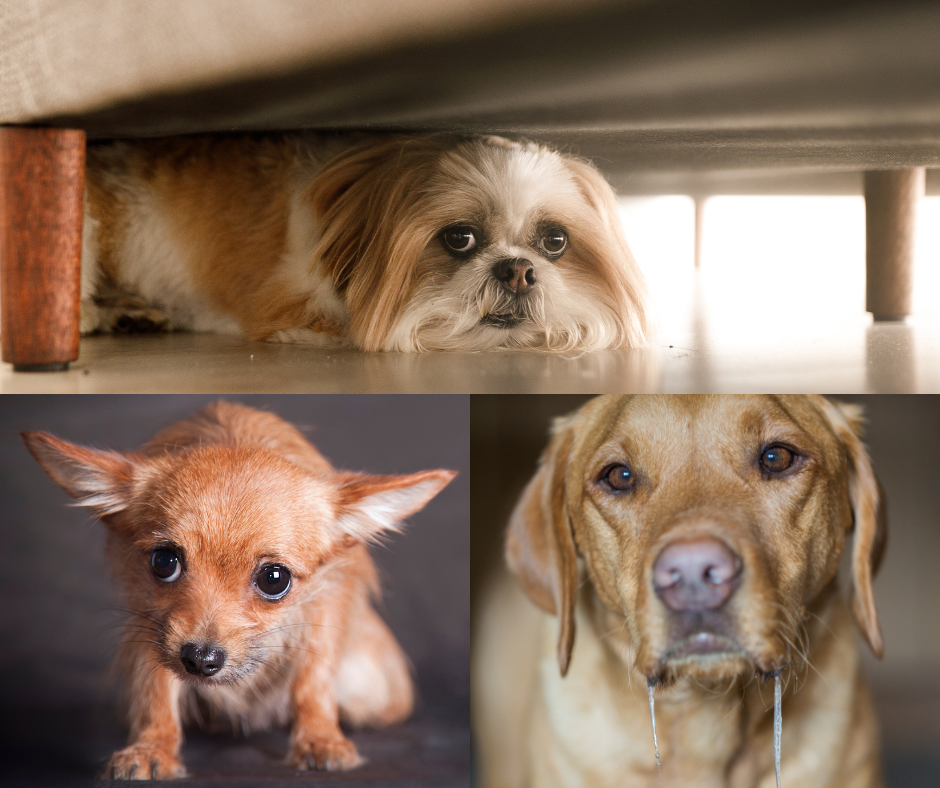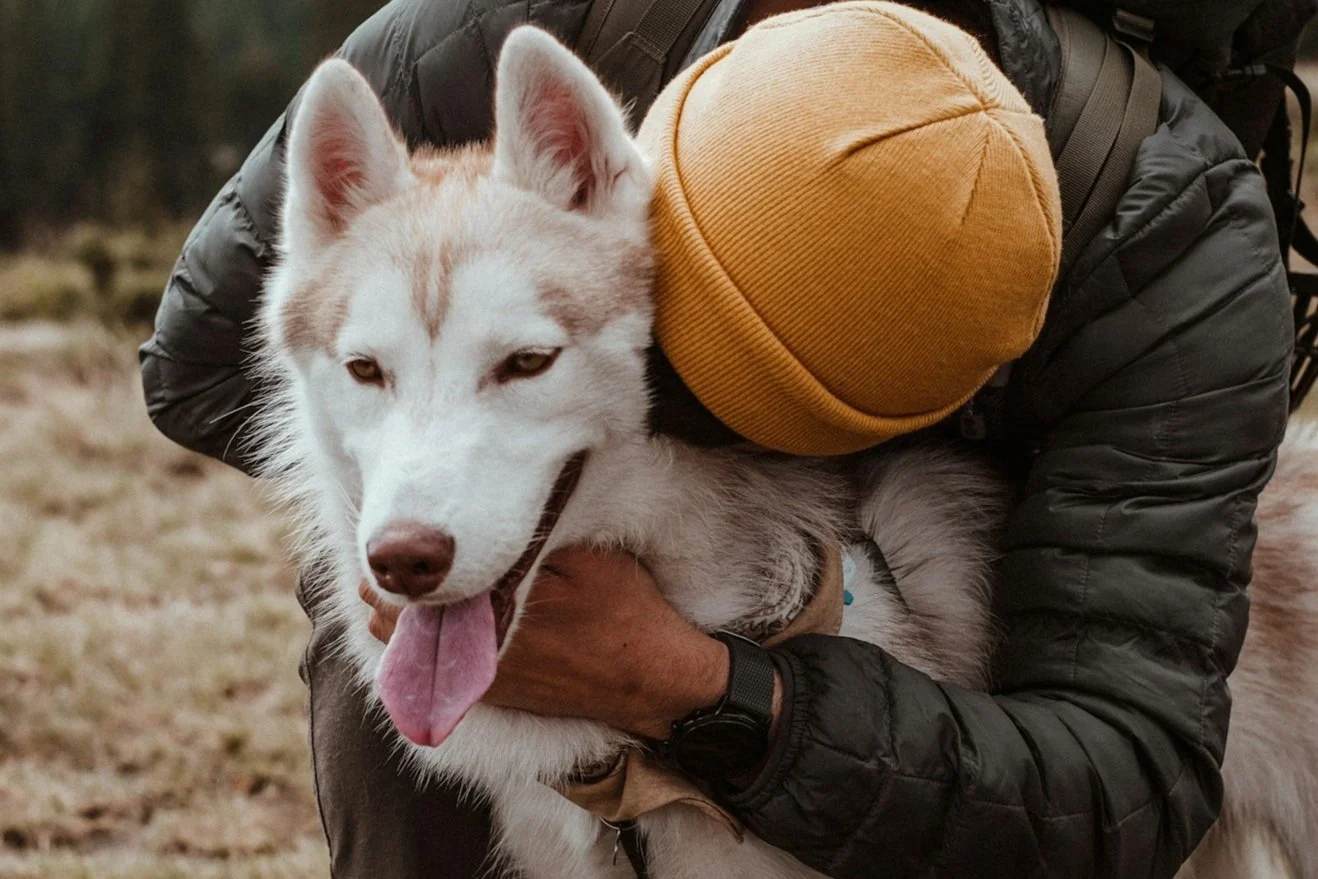Getting Through a Catastrophic Event or Natural Disaster with your Dog
When disaster strikes, it’s not just people who feel the strain—our dogs are also deeply affected. Events like the recent fires in Los Angeles, hurricanes, tornados, and snowstorms bring disruptions, chaos, and stress that can take a toll on our pets. Dogs rely on routine, stability, and the cues they take from us, which makes it especially important to help them navigate such challenging times.
Here are some practical tips to help your dog feel safe, secure, and cared for during and after a catastrophic event.
1. Keep Calm and Reassuring
Dogs are incredibly attuned to our emotions. If you’re feeling anxious or stressed, they’ll likely pick up on it. While it’s natural to be worried during a disaster, try to project a calm and reassuring demeanor around your dog. Use a soothing voice and gentle gestures to help them feel secure.
Breathe. Deep breaths that fill our chest and belly, then long, slow exhales will help to reduce stress and lower heart rate and blood pressure.
2. Prepare a Pet Emergency Kit
Being prepared can make a world of difference when you’re facing a sudden evacuation or other emergencies. Pack a pet emergency kit that includes:
A week’s worth of food and water.
Medications and a copy of your dog’s medical records.
A leash, harness, and ID tags with up-to-date information.
Familiar items like a favorite toy or blanket to provide comfort.
Waste bags and cleaning supplies.
A recent photo of your dog in case you get separated.
3. Stick to a Routine Whenever Possible
Disruptions to daily life can be unsettling for dogs. While it may be difficult to maintain normal routines, try to keep feeding, walking, and playtimes as consistent as possible. Familiarity in these small ways can provide a sense of stability amidst the chaos.
4. Create a Safe Space
Whether you’re at home or relocated in a temporary location, designate a quiet and secure area where your dog can retreat. Include their bed, favorite toys, and familiar scents to make the space feel comforting. Use white or brown noise or soft classical music.
5. Use Calming Aids
For dogs who seem particularly stressed, calming aids like Adaptil diffusers, calming chews, or even a snug-fitting anxiety wrap (like a ThunderShirt) can help reduce tension. These tools can be especially useful during evacuations or if your dog is exposed to loud noises and unfamiliar environments.
You may need to discuss the addition of a pharmaceutical aid with your trusted veterinarian to help them cope in extremely stressful situations.
6. Keep Identification Updated
Disasters can increase the risk of pets getting lost. Ensure your dog’s ID tags and microchip information are up to date with your current contact details. This simple step can make all the difference in reuniting with your dog if you become separated.
7. Offer Mental and Physical Exercise
When physical exercise is limited due to evacuation or poor air quality, keep your dog’s mind and body engaged with interactive toys, puzzle feeders, or training games. Activities like these can help distract your dog from stress while providing a positive outlet for their energy.
Our favorite way to engage with a dog indoors is scent or nose games that allow a dog to sniff to locate food or another object.
8. Watch for Signs of Stress
Keep an eye on your dog’s body language and behavior. Signs of stress or anxiety may include:
Panting, drooling, or trembling.
Pacing, restlessness and hypervigilance.
Excessive barking or whining.
Loss of appetite.
Hiding or seeking constant attention.
Lip licking, yawning.
Body tension
Increased agitation or aggression
And many more…
If you notice these signs, provide extra comfort and reassurance, and consult a veterinarian if the behaviors persist.
9. Seek Support When Needed
You don’t have to go through this alone. Reach out to local animal shelters, rescue organizations, or your veterinarian if you need assistance with food, supplies, or medical care for your dog. Many communities also offer resources specifically for pet owners during disasters.
Contact us! We can help!
10. Be Patient During Recovery
Even after the immediate danger has passed, your dog may need time to adjust and recover. Changes in routine, temporary living arrangements, and lingering stress can all take a toll. Be patient, offer plenty of love, and gradually reintroduce normal routines to help your dog feel at ease again.
Final Thoughts
Disasters are unpredictable and overwhelming, but with preparation and mindful care, you can help your dog feel safe and supported during challenging times. Remember, you’re their rock in uncertain moments, and your bond with them is a source of comfort for both of you.
If you’re currently navigating a disaster like the fires in Los Angeles, our thoughts are with you. We’re here to provide support, advice, or just a listening ear. Stay safe, and hug your pup a little tighter today.
Need Help?
If you’re struggling to care for your dog during a disaster or need guidance on managing their stress, please reach out to me. I’m here to help you and your dog get through this together.







